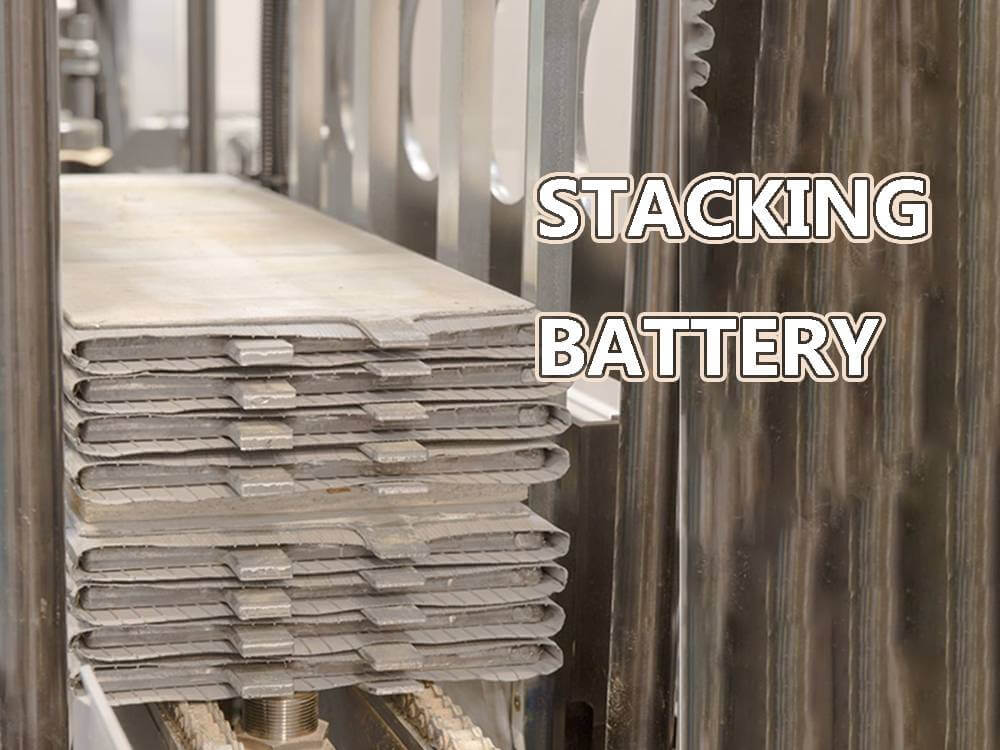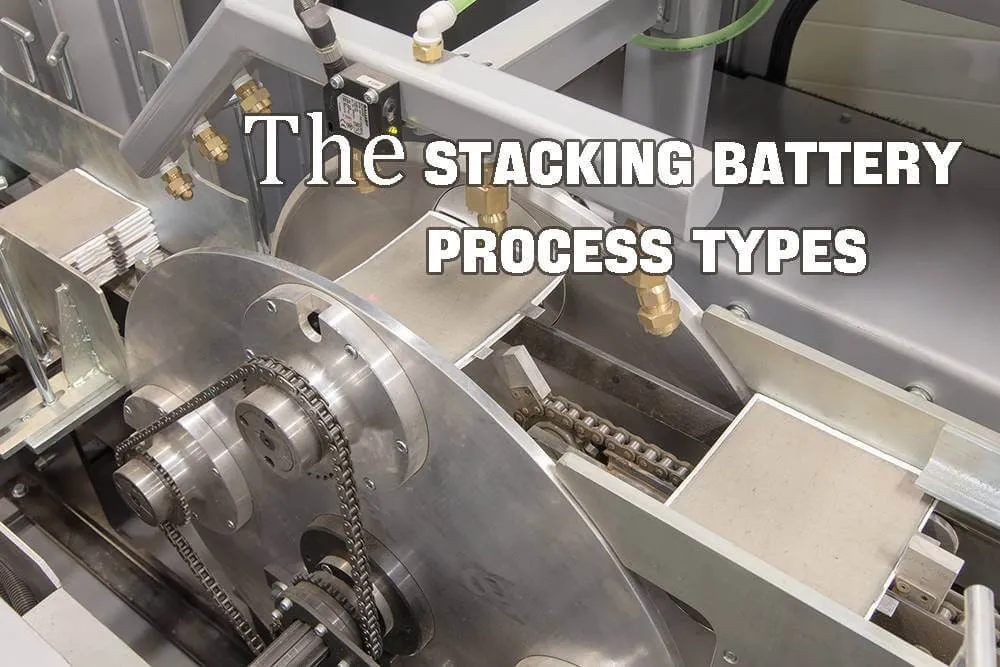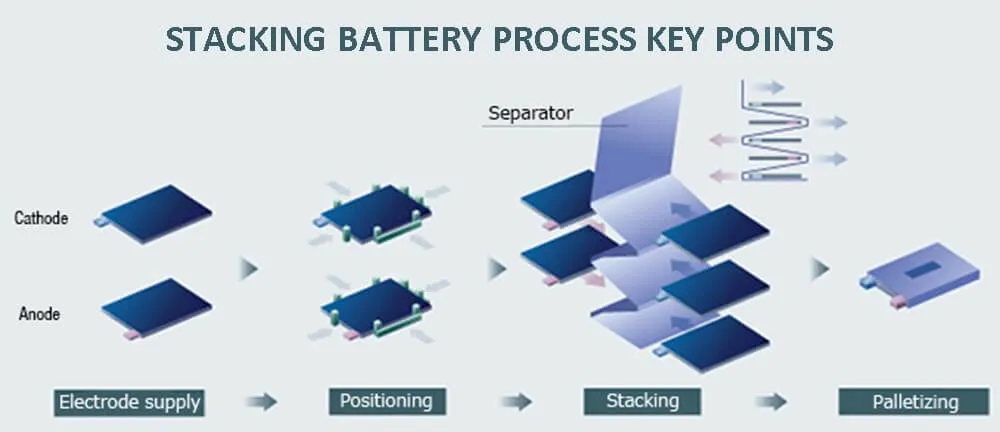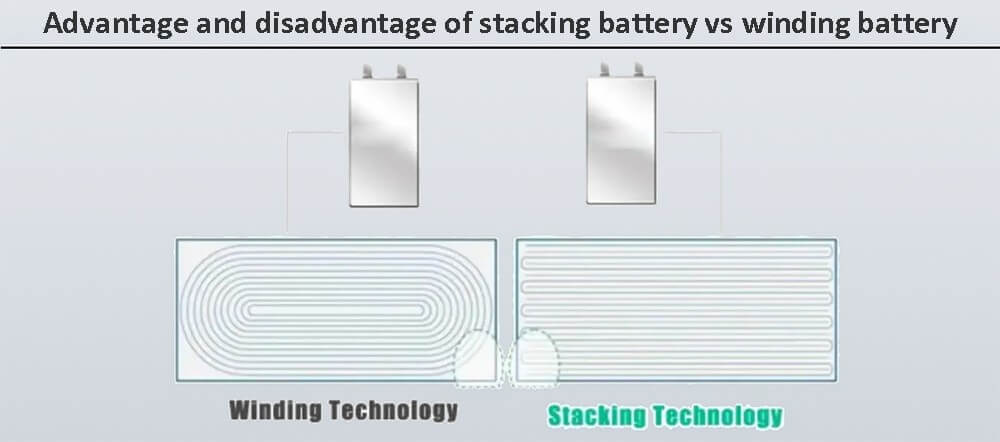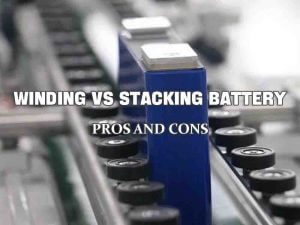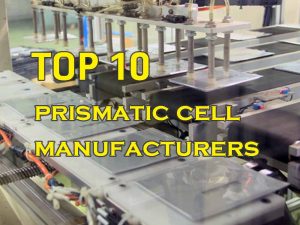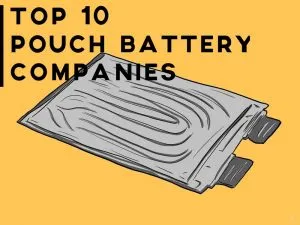Introduction of stacking battery process types and key points

What is stacking battery
Stacking battery refers to a power battery using a lamination process. This type of power battery is generally divided into three forms: prismatic cell, pouch battery, and cylinder. It has two processes, and lamination is one of them.
In May 1991, the research and development team of SONY launched the world’s first commercial lithium-ion battery for mobile phones. This success greatly stimulated the enthusiasm for research and development of lithium-ion batteries worldwide. For a time, lithium-ion batteries became the most promising chemical batteries in people’s minds, and were even considered “the last generation of batteries”. After 1996, ENAX was established in Japan, and the company developed stacking battery technology (Laminate).
The stacking battery process refers to dividing the coated cathode and anode mixture layers into predetermined sizes. Subsequently, the cathode electrode mixture layer, separator, and anode mixture layer are laminated in sequence, and then multiple “sandwich” structure layers are laminated in parallel to form an electrode core that can be packaged. This process is a process developed for prismatic batteries, which solves a series of problems existing in wound structure batteries.
The stacking battery process types
At present, the current stacking battery technology is mainly divided into four types, mainly Z-shaped lamination, cutting and stacking, thermal lamination, and rolling and stacking.
● Z-shaped lamination is the most common method, which has the advantages of low equipment cost and small burrs, but the disadvantage is that the separator is easily deformed and the stacking efficiency is low;
● The integration of cutting and stacking is improved on the basis of Z-shaped lamination. Through the integration of slicer and lamination machine, it can reduce loading and unloading, transfer process, reduce bumps and reduce defective rate. These two pairs have the same advantages and disadvantages, both of which may cause damage to the separator.
● The unit cost of the all-in-one cutting and stacking machine has been slightly lower than that of the traditional slicing machine plus Z-shaped stacking machine, but the utilization rate has decreased to about 80%.
● There is relatively little data on the all-in-one rolling machine, which is a patent of LG. It is mainly used in the manufacture of 3C batteries, and power batteries have rarely been used. If you are interested in 3C consumer lithium battery manufacturers, you can click the link for reference.
At present, the more advanced technology is the thermal composite lamination process, and the efficiency has been greatly improved again. The theoretical efficiency can reach 0.125s/pcs (the unit of measurement of pieces and pieces), but the actual achievement rate is not ideal, and the cost has also been greatly increased. 6-8 million RMB.
Stacking battery process key points
● The anode electrode active material coating needs to be able to cover the cathode electrode active material coating to prevent lithium deposition (lithium deposition is a loss condition of lithium-ion batteries, such as repeated charging at low temperature will cause damage to the battery and reduce the safety of the battery, especially when it is subjected to external extrusion, impact, etc.).
● The separator between the anode and cathode pole pieces needs to be able to completely separate the anode and cathode poles, and it is longer and wider than the anode pole piece. The length and width of the laminated cell separator are usually 1-2mm larger than the negative pole. The specific length of the separator is related to the design of the cell structure;
● The laminated cell requires high orderness of the pole piece and the separator stack, and the assembly position of the pole tab and other parts of the pole piece should be accurate, so as to reduce space waste and safety hazards;
● During the stacking process, it is necessary to prevent damage to the pole pieces, keep the corners of the pole pieces flat and free of burrs.
Advantage and disadvantage of stacking battery vs winding battery
In addition to stacking, the mainstream battery technology is “winding”. Next, we will introduce the advantages and disadvantages of the stacking process by comparing it with the winding process.
Advantage
1. Higher energy density
The cell using the winding process has a lower space utilization rate due to the curvature at the winding corner; while the stacking battery process can make full use of the battery space. Therefore, under the same volume cell design, the energy density is also increased accordingly.
2. The structure is more stable
During the use of the battery, due to the intercalation of lithium ions, both the anode and cathode electrodes will expand. For the wound battery core, because the internal stress of the inner and outer layers at the winding corner is inconsistent, the battery core will undergo wave-like deformation, which will lead to the deterioration of the battery interface.
If the current distribution is uneven, the internal structure of the battery will become more and more unstable, and this process will accelerate. However, the battery of the stacking battery process will expand during repeated use, but in general, the expansion force of each layer is similar, so the interface can be kept flat.
3. Higher security
The expansion and contraction of the pole piece, the stretching of the separator, etc. will cause the deformation of the battery cell, ensuring the minimum deformation of the battery cell, which is also the guarantee of battery safety.
During the winding process, the pole pieces at both ends are bent, and the coating material will undergo large bending deformation; at the same time, problems such as powder dropping and burrs are prone to occur at the bending place; The pole piece and the separator are subject to tension, which is prone to wrinkles and unevenness. The stacking battery is evenly stressed and the deformation is small, and the safety of the laminated battery is higher.
4. Longer cycle life
Cycle life is one of the key properties of batteries. The stacking battery has more tabs, the shorter the electron transmission distance, and the smaller the resistance, so the internal resistance of the stacking battery can be reduced, and the heat generated by the battery is small. However, winding is prone to problems such as deformation and expansion, which affect the attenuation performance of the battery.
Disadvantage
1. Low equipment efficiency
The general power battery winding efficiency is 12PPM (Papers Per Minute, refers to the output per minute), and the square winding machine can achieve this efficiency when the length of the pole piece is 6000mm; However, the efficiency of the traditional Z-shaped lamination is only 4PPM, and the efficiency is three times different. In addition, lamination equipment has a larger footprint than winders, further reducing efficiency.
2. High equipment investment
From the perspective of a single production line, the number of winding machines required is related to the length of each battery cell. Generally, a production line requires 10 winding machines, which requires an investment of about 30 million RMB;
Using the stacking process, the number of stacking machines required for a production line is related to the number of cells, and the investment in stacking equipment for a production line is 60 million RMB, or even more.
3. High defect rate
The winding battery is easy to cut and has a high pass rate. Each battery cell only needs to cut the cathode and negative electrodes once, which is less difficult; However, the cutting of stacked sheets is cumbersome, and each stacking battery has dozens of small pieces, which is prone to defective products, so a single stacked battery is prone to problems such as cross section.
Given that stacking batteries are superior to winding batteries in terms of energy density and safety, and with the continuous development of stacking technology, we expect that the stacking process in square batteries is expected to be used on a large scale in the future.

